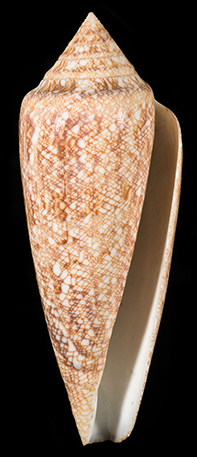Type specimens

Type specimen of the sea snail Gloria maris, first described by Johann Hieronymus Chemnitz in 1777
Amongst the most important specimens kept in natural history collections are the ”Types”. A type is the exact specimen, upon which the description of a new species is based.
Researchers can later revisit the type specimen and restudy it. This is for example the case when one compares it to a possible new species, or if it is suspected that a researcher has named an already-described species.
Furthermore, the museum stores “voucher specimens”. They are examples of specimens, which over time have become of scientific value through being part of large-scale studies and analyses.
By preserving these specimens, later generations can return to the original materials and validate original descriptions and methods, as well as subject them to new research techniques.
